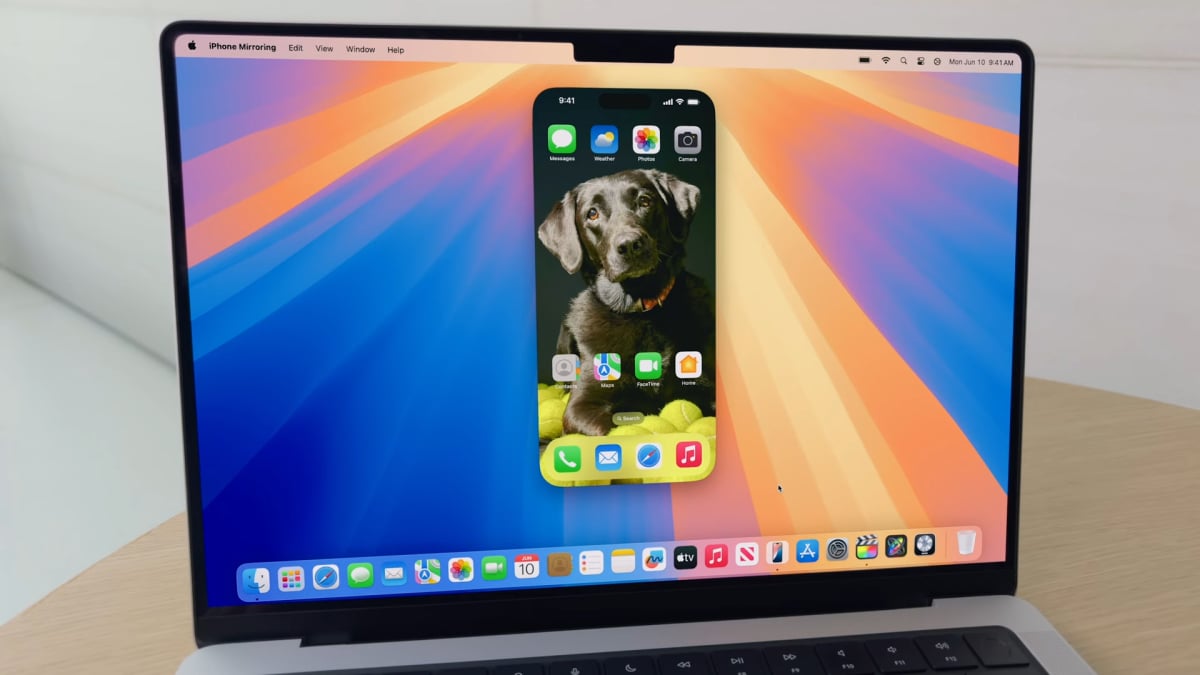Giant tech companies like Apple are constantly adding new features to their platforms, but they can’t do everything. To fill in the gaps, we have third-party apps: These developers can hone in on features that Apple products either don’t have or don’t implement well, and can focus all their efforts on making those features great. It really is a win-win – that is, until Apple decides to take these great ideas and implement them into their platforms for free.
This practice happens so often that there is a name for it: Sherlocking. It refers to Apple’s search app, Sherlock, which took features from the third-party search app Watson. With every major iOS and macOS update, Apple introduces features that threaten or effectively replace independent programs. This year there are eight such applications and categories clearly in the crosshairs. In fact, analysts estimate that Apple’s changes in iOS 18 alone could affect apps that made nearly $400 million last year. But as we’ll discuss, just because Apple introduces these features doesn’t automatically make these apps obsolete.
Magnet
Wouldn’t you know it, but the operating system known as “Windows” has traditionally had better window management than macOS. For years now, it’s been easy to dock Windows windows anywhere you want: If you want a window on the left half of the screen and another on the right, it’s easy with either a mouse drag or a keyboard shortcut. Apple added some window management options to macOS, including both in and out of full-screen mode, but it’s still far behind the keyboard shortcut simplicity that Windows offers.
That’s where third-party apps like Magnet come into play: These utilities basically add Microsoft’s window management to macOS: Windows can be clicked into place with keyboard shortcuts or by dragging windows to certain corners of the display. For all PC users switching to a Mac for the first time, apps like Magnet were must.
That is until WWDC, when Apple casually unveiled its new window management system for the Mac. It’s a simple system: drag windows to the sides and corners of your display to snap them into place, or use keyboard shortcuts to do the same. But this simple system takes care of most of the features that people turn to macOS window management utilities for. That’s bad enough for freeware, but considering apps like Magnet cost $4.99, it can definitely hurt the developer.
1 Password
Apple has actually had a decent password management system for a while: In recent years, iCloud Keychain has done enough to keep me from considering third-party alternatives like 1Password or Dashlane. However, iCloud Keychain’s biggest weakness was its lack of centrality: It works great in the background, automatically creating and saving new passwords, and autofilling those passwords when you need them. But when it comes to manually downloading your credentials, having a full-fledged app definitely improves the experience.
Of course, that’s what Apple is doing this year: iCloud Keychain is now an app called Passwords that syncs between your Apple devices. Now you have a clear division for things like passwords, 2FA codes, passkeys and wifi passwords, and you can also access shared password collections. However, aside from these much-needed tweaks, it’s still a pretty straightforward experience. I don’t think there are dedicated password managers danger because of this new experience, existing users are also likely to stick with their chosen platform for the additional features it offers. But third-party apps will probably have to convince new users why the iPhone and Mac password app isn’t good enough for them (especially as it probably is).
TapeACall
Recording of phone calls is available sucked on iOS. There was never a built-in way to do it, so you had to use a half-baked solution in the free Google Voice app (which only worked for incoming calls) or pay an expensive subscription to an app like TapeACall.
Soon, though, call recording won’t just be part of iOS: you’ll basically be invited to try it out. Apple advertises the feature as another menu option when you’re currently in a call: Just hit the record button, and iOS will record everything you and the other caller say. This probably sent shivers down TapeACall’s spine, whose $10 per month subscription now seems a bit expensive compared to a free update to iOS 18.
That said, Apple is advertising this feature as part of Apple Intelligence, the trademark for the company’s big AI features. If this is true, only the iPhone 15 Pro and 15 Pro Max (as well as future iPhones) will be able to perform this phone recording feature. This leaves a significant market for apps like TapeACall to continue to sell to. (Fingers are crossed for a price drop, though.)
Grammatically
Speaking of Apple Intelligence, the company’s upcoming AI assistant will be happy to help you proofread your writing and rewrite any sentence or paragraph on the fly — whether you’re typing on your iPhone, iPad, or Mac.
That shouldn’t be great news for companies like Grammarly, which offer all-in-one solutions for checking spelling, grammar, and sentence structure as you type. Grammarly even launched AI writing tools in the age of AI: at the time, this might have seemed like a competitive move against options like ChatGPT or Gemini. (Why copy and paste your text into a chatbot when a Grammarly extension can do it for you directly in the text field?) But now that Apple too there’s an AI typing bot on the horizon, the question becomes: Why download the extension?
Of course, just like with TapeACall, there will initially be a limited audience for Apple’s AI features. Apple Intelligence is only available on iPhone 15 Pro and M-series Macs, meaning all Intel Mac authors will still want to keep their editor of choice.
Newji
Apple Intelligence is generative AI, which means it there is to have an AI art component. Among these new features is the ability to generate new emoticons to share in chats. As for the AI art, it looks harmless and even fun, in case the existing emoji options don’t quite fit the vibe you’re going for.
However, this is a bummer for apps like Newji. It basically works just like Apple’s new feature: You tell the AI what you want your emoji to be (Newji’s prime example is “a big rat dragging a slice of pizza”) and it generates options to choose from. Fortunately for Newji, Apple Intelligence is slow and won’t be available on most iPhones – at least for now. So the company has some time before more people start buying iPhones compatible with Apple Intelligence.
AllTrails
New to the Maps app across Apple’s ecosystem is a range of hiking features: Updates provide downloadable topographical maps within the app, as well as thousands of hiking trails to save offline. Even when you don’t have service, these offline maps and walking tours offer turn-by-turn navigation with voice, as if you’re pulling from a live directions feed. You can even create your own routes if you want.
Um. Sounds suspiciously similar to AllTrails, doesn’t it? Fortunately for them, AllTrails already has a huge user base, so it can offer more experiences than Apple Maps, at least initially. But looking at what the iPhone is en masse popular in the US, the more tourists turn to Apple Maps for hiking, the bigger the community can grow. And unlike some other options on this list, all Apple devices compatible with this year’s updates get these features because they aren’t tied to Apple Intelligence. This will be one to watch.
Otter.ai
Transcriptions is another non-Apple Intelligence feature coming to Apple devices this year. (It’s still powered by AI.) When you make an audio recording in Voice Memos (or Notes), iOS or macOS will transcribe it for you. This is a big advantage: you can quickly go through a conversation you recorded, or perhaps a presentation or lecture, and look for a specific topic that was mentioned.
Of course, this is also a big advantage of services like Otter.ai. One might think that Apple’s AI transcriptions threaten Otter.ai and its ilk, but I see that as largely unaffected for now. Otter.ai in particular is so feature-packed and integrated with various work packages in a way that will likely insulate it from Apple’s new features here. I see Otter losing the most business to new transcribers who just want a quick way to review a voice memo. Why bother looking for a solution when the transcription already appears directly with your recording on your iPhone or Mac?
Bezel
Of all the apps on this list, Bezel may have the most problems. With macOS 15, Apple adds screen mirroring to the iPhone. This means you can wirelessly view and control your iPhone’s display from your Mac while your iPhone remains locked and tucked away.
Bezel is undoubtedly the most popular third-party option for mirroring your iPhone’s display to your Mac, but it may not be able to compete with macOS Sequoia. For one thing, Bezel requires a cable, while macOS supports wireless iPhone mirroring. But the bigger problem is that Bezel costs $29 to use on one Mac and $69 for up to three Macs. Meanwhile, Apple’s Screen Mirroring feature is free with an update to macOS 15 on any supported Mac. This is definitely a tough situation for Bezel.
But again, just because Apple adds a new feature to iOS and macOS doesn’t mean that third-party options that offer the same feature are toast. The App Store is full of apps that sell features that Apple has built into its platforms for years, and they succeed by offering a different (or perhaps improved) experience than Apple. I think most of these apps have the same capability, but it will really depend on what the users want.



